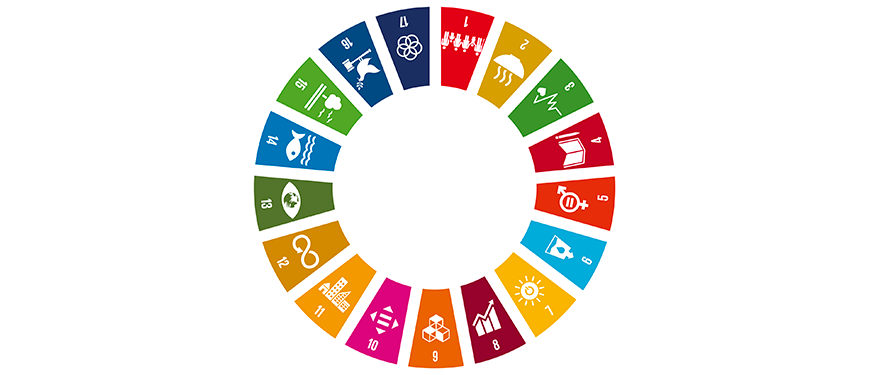As a scientific department at SDU, IMADA is naturally part of the university's genereal SDG strategi.
We wish to work with all of the UN's 17 SDGs based on the free, critical and independent research and education.
In relation to research and knowledge collaborations we have a number of different contributions within SDG.
Algorithmic Cheminformatics
Many important questions and challenges in research, industry, and society involve large and complex networks of chemical reactions. Some examples are: understanding the regulation of metabolic networks in humans; planning and optimizing chemical synthesis in industry and research labs; modeling the fragmentation of molecular ions inside mass spectrometers; developing personalized medicine; probing hypotheses of the origins of life; and monitoring environmental pollution in air, water and soil. All of these are strongly linked to one or more of the EU-endorsed sustainable development goals from the UN 2030 agenda. In the Algorithmic Cheminformatics group at IMADA, we develop new computational methods for analyzing networks of chemical reactions and we aim to train a new generation of excellent researchers capable of evolving and applying these methods in research and industry. Combined, these efforts carry very strong potential for impact on the challenges above, on the EU commission priority on jobs, growth, investment and competitiveness, and on the well-being of the EU citizens.
Mathematics and Statistics
In addition to our commitment to high quality education in Mathematics, Applied Mathematics and Computer Science (Goal 4), we tackle topics at the core of the SDGs that require a deep understanding of mathematics and their applications. For instance, we have expertise on modeling stochastic differential equations, which are fundamental to understanding temporal processes that have a strong random component such as financial systems (Goals 1 and 8). Furthermore, we apply different methods to model disease dynamics, for example, using renormalization group approaches to investigate the spread of Covid-19, or combining stochastic population dynamics models with epidemiological models to predict the impact of Covid-19 on great apes (Goals 3 and 15). In addition, we support innovation by means of state-of-the-art modeling methods for aerodynamics applications (Goals 7 and 9). We also have expertise on statistical theory and its application, fundamental to the SDGs. For example, we work on the theory and modeling of extreme value statistics to understand extreme events such as those we are witnessing with climate change (Goals 1, 2, 13). We also use the latest approaches on Bayesian inference to understand demographic rates and population processes on changing environments, which are essential to assess and prevent biodiversity loss (Goals 14 and 15). To achieve all these efforts, we are supported by the E-Science Center, which provides one of the largest cloud and super Computing infrastructures in Northern Europe (Goal 9).
For a full description on how IMADA contributes to nearly every SDG goal see this folder.
